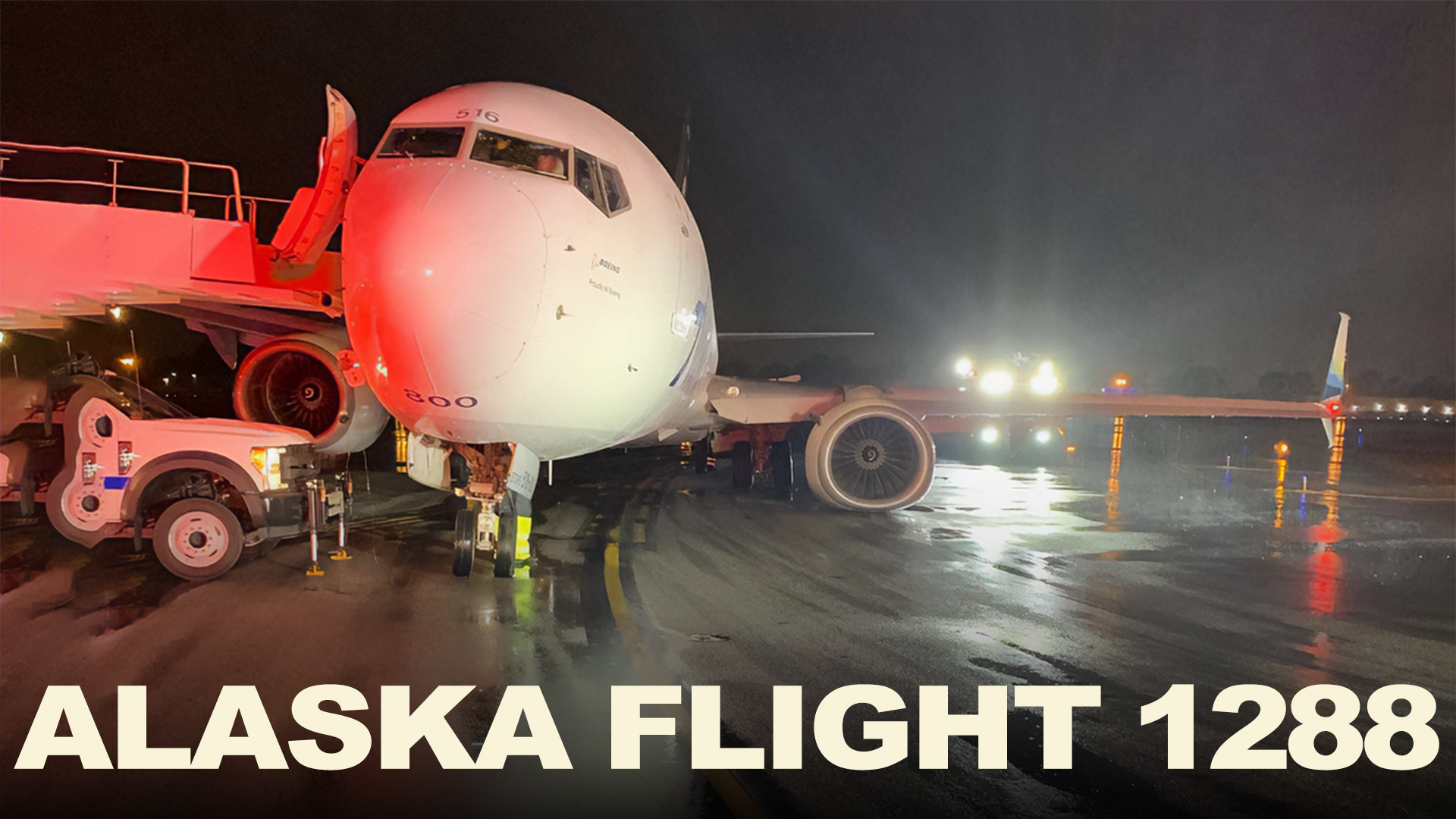Alaska Flight 1288 Accident Touch Down 1.71g Says NTSB

Passengers and crew escaped uninjured from this
Boeing 737-890 NG operated as Alaska Flight 1288
after the left main gear collapsed on landing.
Image courtesy: Orange County Fire Authority
The US National Transportation Safety Board (NTSB) has issued a preliminary report into the August 20, 2023, crash of Alaska Flight 1288, a Boeing 737-890 NG.
The accident aircraft is one of the popular so-called Next Generation 737s flown with a registration of N516AS and built in 2008, according to Federal Aviation Administration records. It is not to be confused with the more recent 737-8 MAX series of Boeing aircraft, which have been involved in two fatal accidents.
An aviation investigation preliminary report is a limited finding of facts. It establishes a record of when, who, what and where an accident occurred, including any forensic information that is quickly available, but it does not address any cause or causes, or include safety recommendations.
The Alaska Flight 1288 accident took place on arrival at John Wayne-Orange County Airport (SNA), Santa Ana, California, and is notable in part because it was well documented on social media. The video below captures the point of view of a passenger aboard Flight 1288 (caution some NSFW language may be heard in the video).
Alaska Flight 1288 Video [Caution NSFW Language]
The event also stands out because it occurred just as a rare hurricane cleared Southern California in the vicinity of its destination.
The NTSB report says that Alaska Flight 1288 sustained damage when the left main gear collapsed while landing on runway 20R at ll:15 PM PDT. All 112 aboard evacuated the aircraft via stairs without anyone suffering injuries.
Despite the recent severe weather conditions in the vicinity, according to the NTSB, the flight crew stated that there was "moderate rain, shifting winds, light turbulence, and instrument meteorological conditions until the aircraft broke out at about 800 feet above ground level (AGL)."
The flying pilot was the captain who told the NTSB that the landing had a, "firm jolt feeling." Despite that perception, the NTSB said that data recovered from the Digital Flight Data Recorder (DFDR) indicated that the touchdown was not especially severe with, "a maximum vertical acceleration of 1.71g." That is a figure, "below the hard landing threshold of 2.2G per Alaska Airlines aircraft maintenance manual (AMM) Chapter 5 limitations."
Nonetheless, the report states that an examination of the aircraft after the accident revealed that the left main landing gear (LMLG), "aft trunnion pin had fractured." The aft end of the LMLG traveled up and through the wing's surface which resulted in the leaning and reduced engine ground clearance seen on the left side of the aircraft in the photo and video of the landing sequence.
The Cockpit Voice Recorder (CVR) has been retrieved from the accident aircraft and the NTSB says the contents are still being reviewed.
The preliminary report concludes by stating the airplane crash investigation continues.

Craig has decades of experience contributing to Flight International, Aviation Week, KCRW, NPR, and appearances on the Discovery, Military and History Channels.

 Welcome to AeroSpaceNews.com, the world's first
Welcome to AeroSpaceNews.com, the world's first